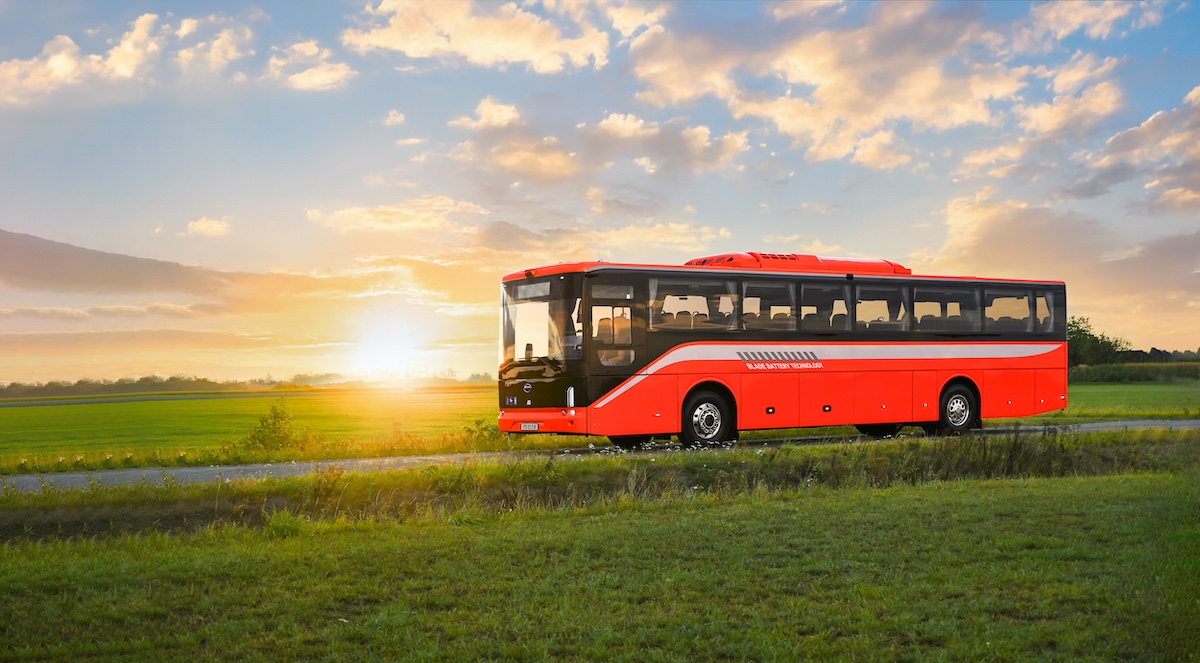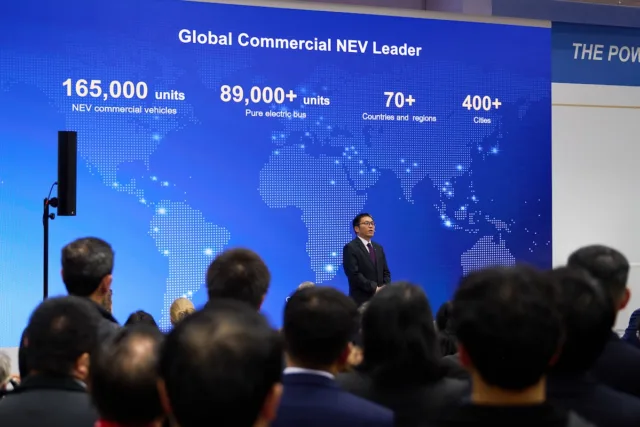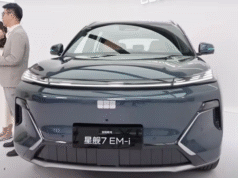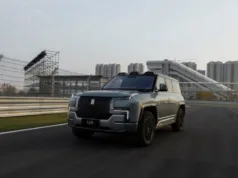With more than 7,000 e-buses in operation or on order across 26 countries, BYD continues to consolidate its position in Europe’s electric bus market. In 2025 the company celebrated a major milestone, delivering its 5,000th eBus in Europe to Danish operator Umove.
Henry Zhang, Managing Director of BYD Europe, explains how the launch of the new 3.0 e-Bus Platform marks a technological leap integrating the Blade Battery and a highly efficient electric architecture. He also sheds light on BYD’s expanding production capabilities in Hungary and the growing focus on intercity electric buses (at Busworld the group launched the high-floor Class II model B12.b HF). A conversation that outlines BYD’s strategic direction as it prepares its next generation of vehicles for Europe.
1,000 units is the initial phase of the Hungary factory expansion. More capacity will be added in the future. BYD intends to produce the full product range in Hungary as in China, this offering sufficient capacity to our customers’ needs in this fast-growing European e-bus market. BYD is now rolling out the BYD eBus Platform 3.0 to all the buses offered in Europe. The novelties will mainly fall into the intercity category.
Henry Zhang, Managing Director, BYD Europe

BYD outlooks and the role of the 3rd generation platform
Battery-electric bus registrations in Europe grew by +41% in the first half of 2025, with BYD itself raising its market share from 5.5% in 2024 to nearly 10%. As 2025 is nearing end, could you provide us with an overview of BYD’s performance in Europe this year — in terms of sales, deliveries, and order intake — and how these figures compare with 2024?
The outlook for the year is as healthy as it was in 2024 for BYD. BYD has remained a market leader in Europe’s electric bus sector. We now have 7,000+ eBuses in operation or on order across 26 countries and 160+ cities. Last month, we delivered our 5,000th BYD eBus in Europe to Umove, one of Denmark’s largest public transport operators—another milestone that reflects the long-term trust European customers place in us.
BYD has just launched its 3rd generation e-bus platform. At Busworld it was stated that such platform is the one on which BYD new vehicles are based. Can you elaborate more on this? Will all BYD buses on offer in Europe be updated to the new platform? Which are its strengths?
Yes, BYD has officially launched 3.0 generation e-Bus Platform, representing a game-changing breakthrough in our electric bus technology. This new platform, based on BYD’s e-Platform 3.0, integrates the blade battery, SiC electric control system, hairpin motors, integrated thermal management system and the structural integration of the battery within the chassis into one highly efficient electric architecture.
At its core, the platform directly integrates the Blade battery into the chassis, turning the battery into a structural component of the vehicle. This greatly enhances torsional stiffness, safety, and stability, while reducing overall weight and energy consumption. Combined with the 6-in-1 powertrain controller and the integrated thermal management system, the platform achieves excellent energy consumption, high battery capacity, long driving range, and superior handling and comfort — making it an economical, safe, comfortable, and environmentally friendly solution for modern urban transportation.
Currently, BYD has already launched several new models built on this platform, including the B12.b LF, B12.b LE, B12.b HF, B13.b, and the B18.b (available in both long and short wheelbase versions).
In the near future, 10m and 15m models will also be introduced, and all upcoming BYD eBuses for the European market will gradually migrate to this new generation platform.
For BYD it is important to ensure that the full supply chain of the product is always secured by BYD. The body of our buses is part of this supply chain and is no exception to this rule. BYD does and will collaborate with bodybuilders but will always produce the full vehicles in its factories as well, thus ensuring ability to provide larger fleets than the body builders can cope with.
Henry Zhang, Managing Director, BYD Europe
BYD is set to expand its Komárom facility in Hungary, reportedly tripling local capacity to 1,250 units annually. With this expansion, can you clarify which bus models are currently produced there, and which new models or segments you plan to add for the European market in the future?
1,000 units is the initial phase of the Hungary factory expansion. More capacity will be added in the future. BYD intends to produce the full product range in Hungary as in China, this offering sufficient capacity to our customers’ needs in this fast-growing European e-bus market. BYD is now rolling out the BYD eBus Platform 3.0 to all the buses offered in Europe. The novelties will mainly fall into the intercity category.

Delivery times, e-coaches, after-sales network…
Many operators report long delivery times from OEMs, sometimes over 12 months. How does BYD manage its capacity and delivery times in Europe?
BYD has invested in a large bus manufacturing capacity over the years. With manufacturing in Europe (Hungary) working in tandem with our plants in China, we can keep lead times competitive. We can fulfill large orders with delivery in around one year—or sooner, depending on specification and local homologation.
Do you see a business case for electric coaches in Europe today?
Yes, if the route can be serviced by an electric bus. Most lines run a maximum of 400 km a day and this is doable with today’s batteries. However, if the customer uses the coach non-stop (changing drivers) or does not allow for intermediate charging, this limits the cases when an electric coach can be used.
Aftersales support is a decisive factor to grow in the market. How is BYD structuring its service network in Europe to ensure uptime?
BYD relies on a 10-year-old, well-proven business model for after-sales which involves mainly utilizing the workshop from the customers themselves, and in some cases independent local workshops acceptable to our customers. Now in Europe, we have more than 100 service locations in 15 countries. We’re by our customers’ side. In the future, vehicles like coaches and school buses, which can be purchased in small amounts by commercial companies, will be serviced by the BYD e-Truck dealer network.

The market is gradually shifting focus from complete buses to chassis and technology platforms. BYD is no exception, as the more recent product launches are labeled as ‘platforms’. Are partnerships with bodybuilders becoming increasingly important in this transition, and how do you see your market offering to evolve in the upcoming future?
For BYD it is important to ensure that the full supply chain of the product is always secured by BYD. The body of our buses is part of this supply chain and is no exception to this rule. BYD does and will collaborate with bodybuilders but will always produce the full vehicles in its factories as well, thus ensuring ability to provide larger fleets than the body builders can cope with.









